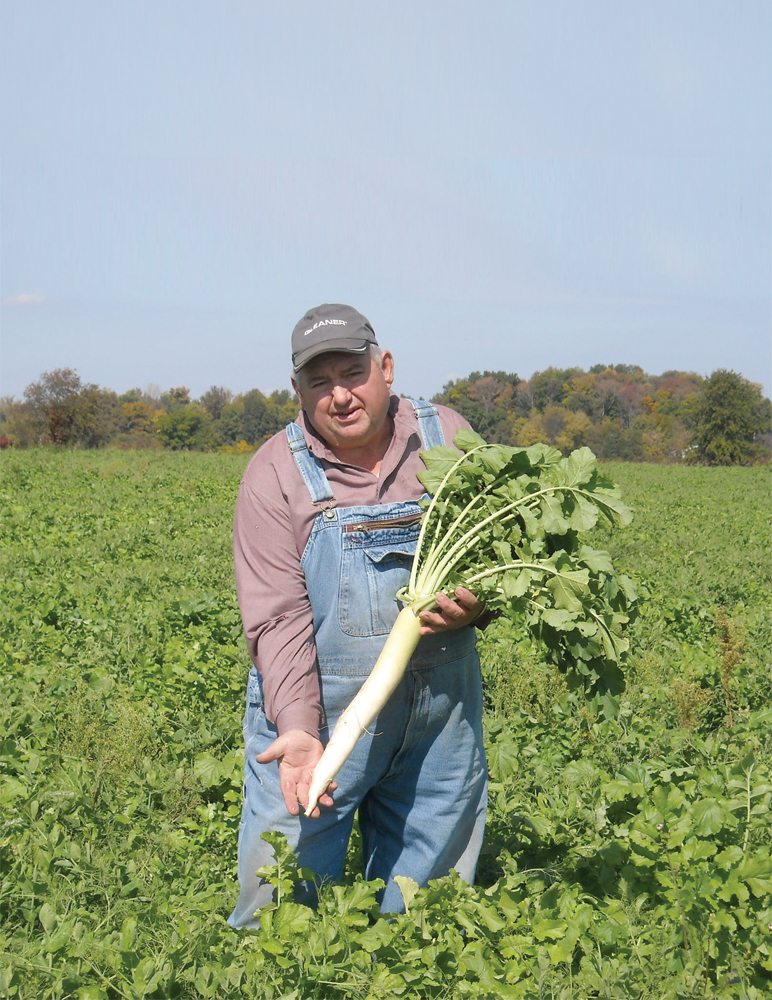Cropping Between the Lines: Cover Crop Veteran

PHOTO: BRANDT’S FARM
October 18, 2011
BY Holly Jessen
Dave Brandt, a farmer from Carroll, Ohio, first incorporated no-till into his operation in 1971 and added cover crops in 1978. He uses a corn/soybean/wheat rotation on his farm and is an enthusiastic promoter of cover crops. When Brandt talked to EPM in September, he had about 350 acres of radishes and winter peas already planted for the winter cover crop. He was in the midst of harvesting another 300 acres of corn on land in which radishes and winter peas were planted the previous fall, and another 40 acres of corn that had been previously planted with hairy vetch as a winter cover crop.
Cover crops supply nitrogen and nutrients to the next crop. Brandt has found that planting winter peas and radishes reduces needed nitrogen inputs by about 75 percent, while hairy vetch reduces it by about 60 percent. In addition, it costs much less to plant cover crops than it does to fertilize, he says. Planting winter peas and hairy vetch costs him only $17.50 an acre, although that doesn’t include his time and equipment. Fertilizer, on the other hand, costs about $120 an acre at this fall’s prices. “We saved about half of our nitrogen costs, including the seed,” he says.
Advertisement
Advertisement
He’s also gotten some good results protecting sloped ground from erosion. Starting at normal tolerated soil loss, Brandt has reduced soil erosion on his farm to less than 50 to 80 percent using cover crops.
The long-term benefits are perhaps even more impressive. Brandt’s soil has gone from organic matter readings of half a percent to as high as 4.5 and 5 percent. That gain in organic matter adds up to measurable improvements in the crops themselves. “We have done some work with grain sampling and we found that our no-till corn with cover have more nutrients than corn that is in a corn/bean conventional rotation,” he says.
Advertisement
Advertisement
In general, Brandt finds that winter peas and radishes freeze out over a hard winter, while still providing the benefits of a cover crop. Hairy vetch, on the other hand, stays green all winter and needs to be suppressed in the spring before planting.
No-till and cover crops do take a little more management, he says. It can be a difficult switch for those used to doing things a certain way—some ever since their grandfathers farmed the land. “You have to change your mindset if you are going to grow covers,” he says, advising farmers to start small so they can see the benefits for themselves.
Author: Holly Jessen
Associate Editor, Ethanol Producer Magazine
(701) 738-4946
hjessen@bbiinternational.com
Upcoming Events





